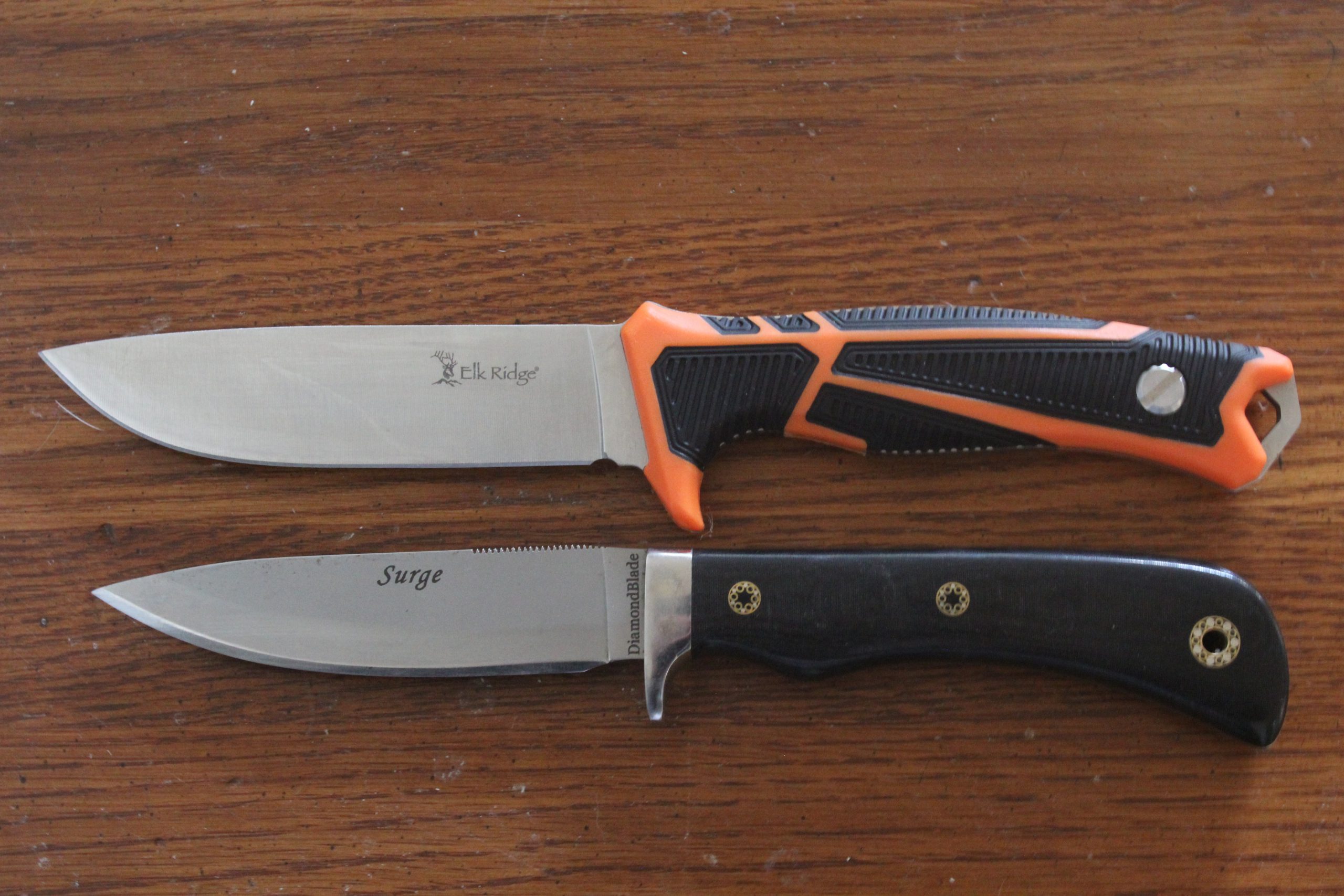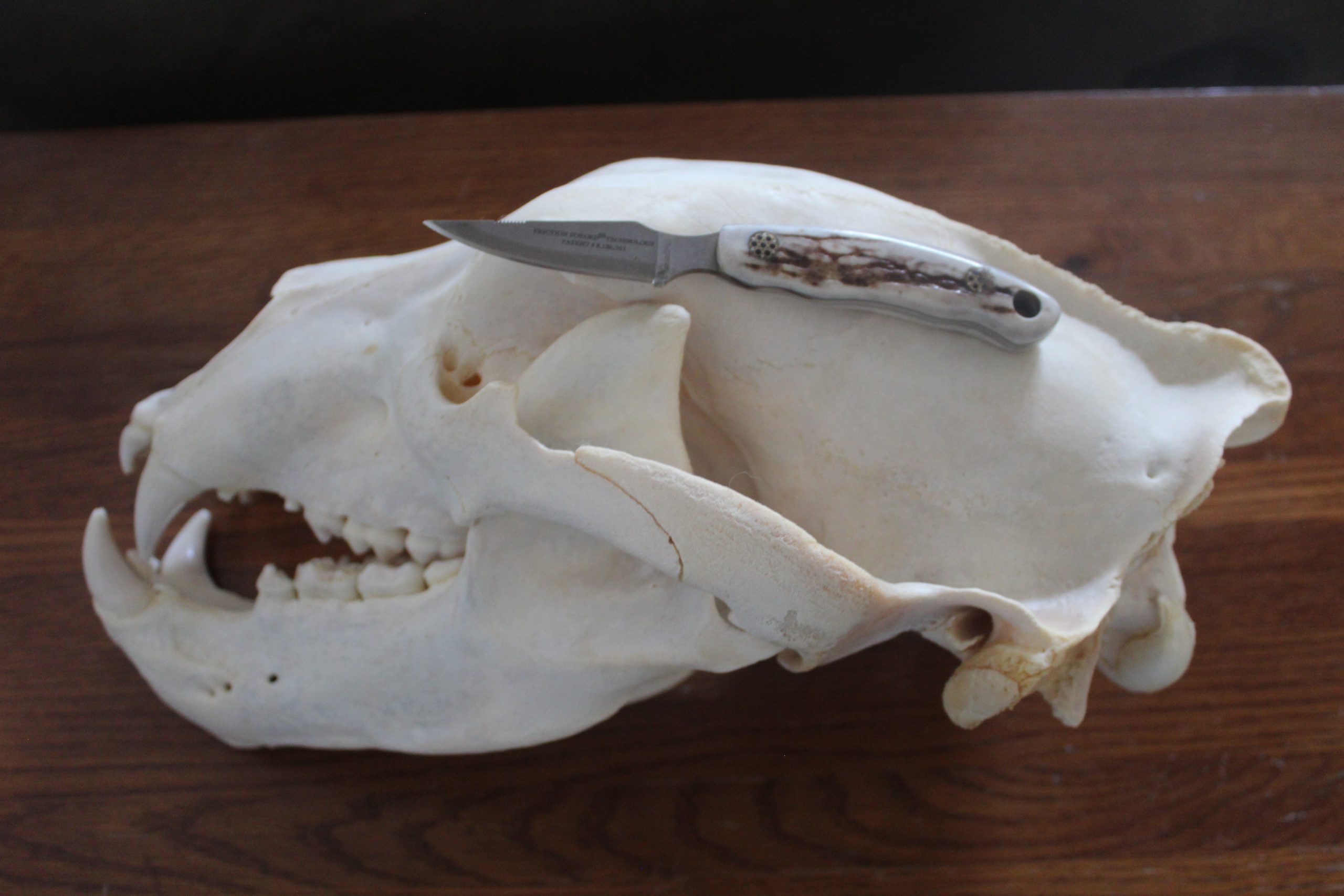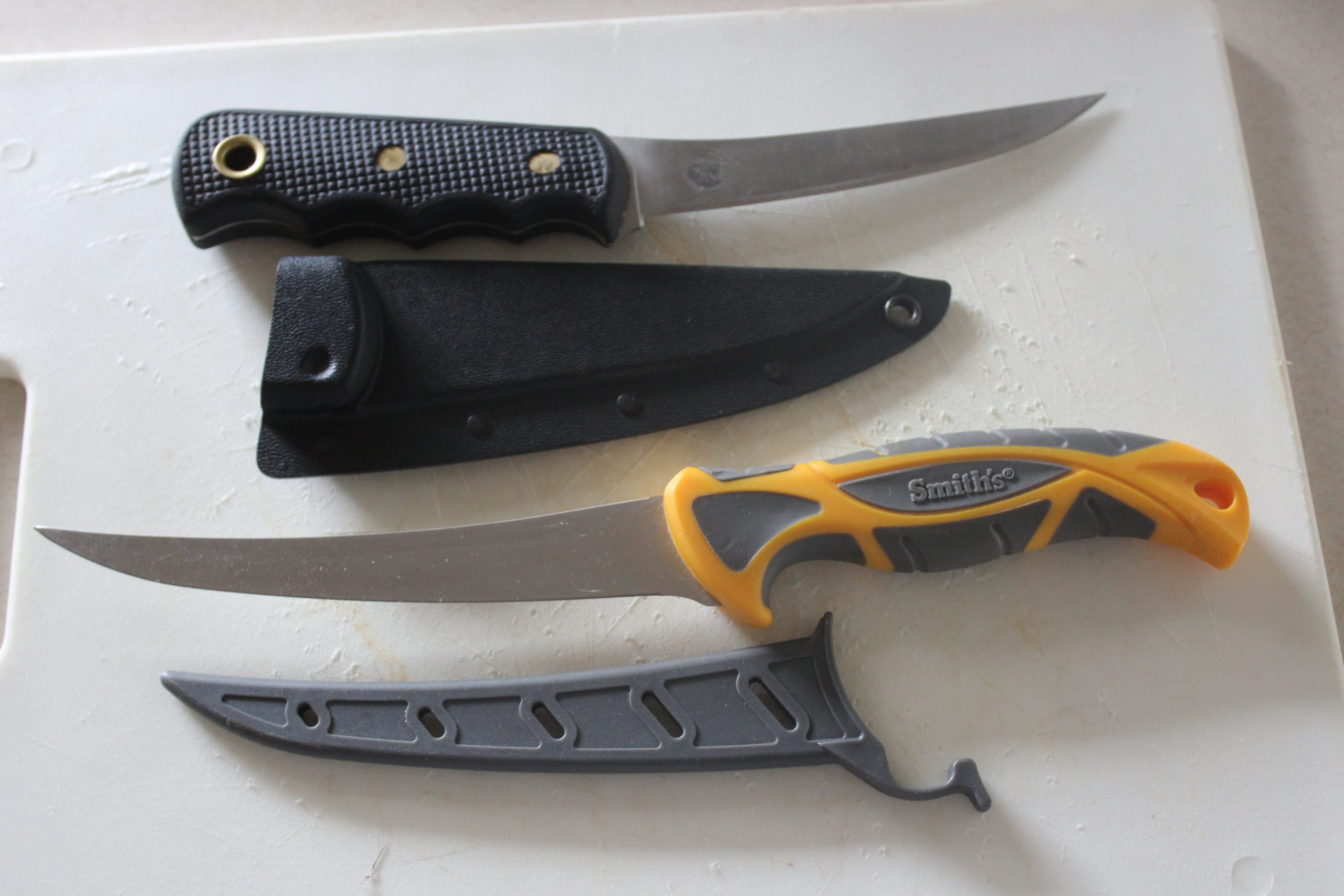By: Tom Claycomb III
I’ve taught KNIFE SHARPENING/CHOOSING THE PROPER KNIFE seminars from Texas up to Vegas and on up to Alaska for the last 25 years. In fact, I just had four knife seminars in January, one at the Dallas Safari Club Conv. & Expo, two at the SHOT and one at the Safari Club International Conv. For the first 8-10 years, I just titled my seminars as Knife Sharpening seminars. But it seemed that after every seminar someone would take me over to the knife display, if the seminar was in a store like Cabela’s, Bass Pro Shop, or Sportsman’s Warehouse, and point at a knife in the kiosk and ask me if it was a good knife.
Let’s just sum it up my thoughts like this: There are a lot of weird looking knives out there! I’m sure they’re good for something, I just don’t know what. And to make choosing the right knife for you more confusing, there are now a million manufacturers. When I was a kid, there were about five popular manufacturers. So now, with the endless options shoved in front of us, deciding which knife to choose can be confusing. So, let’s set two parameters to help you narrow down your choices.
First, look for five designs. I’m not a tactical guy. I don’t rappel out of helicopters and slice off the heads of invading Russians in Ukraine. I just kill stuff, skin it, and eat it. So, I’ll tell you the five designs I recommend you look for that fit our hunting world.

The Elk Ridge Outskirt knife is a good example of a clip point knife. Notice how it has a definite point for all of your stabbing jobs such as marking the pattern when skinning.
CLIP POINT
A clip point knife has an upswept tip with a definite point so you can do your stabbing jobs, like cutting the pattern. By pattern, I mean making the H cut when skinning your big game animal. You know, the cut down the midline and then out each leg to the hoof.
You can skin your animal with a clip point knife, but most people favor a drop point knife because you’ll tend to cut more holes in the hide with a clip point than with a drop point knife. But, can you skin an animal with a clip point? Sure, I’ve skinned over 100 deer with a clip point folder.

Here are two drop point skinning knives. The top one is an Elk Ridge skinning knife with the typical drop point design. The bottom one is a Diamond Blade Surge. Notice how the spine is slightly ground down so it has a point so you can do stabbing jobs with it plus skin an animal.
DROP POINT
A drop point knife has a round curvature near the end of the blade and the spine is straight. You can skin faster with a drop point than you can with a clip point without fear of cutting through the hide. If you’re not going to save the hide, then who cares? Just carry a clip point and do all your skinning with it.
I became acquainted with Charles Allan, the owner of Knives of Alaska and Diamond Blades, back in 2005. On his award-winning Traditional Hunter knife, he ground down the spine near the tip, which made it like two knives in one. It has a definite point so you can cut the pattern; but it also has a drop point so you can skin fast without fear of cutting through the hide. As far as I know he was the first to do this. More of his knives now have this feature and it appears that other manufacturers have followed suit.

You want a caping knife to skin around the eyes and lips if you’re going to mount your trophy’s head. This one is a Diamond Blade Pinnacle II which is what caped out this brown bear.
CAPING KNIFE
If you’re going to mount the head of your trophy or skin the feet/toes on a bear then you’re going to want a caping knife. To do the finesse cuts around the eyes, lips and toes you’ll need a caping knife. The best ones are about 2 ¼-inches long, 5/8-inch thick and are really pointed. It’s nice to have thumb grooves on the back of the spine and a finger groove in the bottom so you can choke down on the knife to do your intricate cutting.
One thing that drives me nuts is when manufacturers make small handles to match short blades. My hand is the same size whether I’m using a caping knife or a machete! Make a full-size handle. Ok, I don’t really want a full-size handle on my caping knife, but don’t make a preschooler size handle either.

Here are the two top boning knives on the market. The top one is a Knives of Alaska “Professional Boning Knife”, the bottom one is the Smith’s 6-inch boning knife. Notice how both have an upswept blade and both come with a plastic sheath.
BONING KNIFE
I like a 6-inch blade on my boning knives, but I’ve got buddies who are just as good at boning as me and favor 5-inch blades. So even among experts there are varying opinions on some topics. And truth be told, I like a 6-inch knife that has been used and ground down a little, so you could say that I actually favor a little shorter than 6-inches.
I recently wrote a whole article for GPM on choosing the proper boning knife, so I won’t go real deep on this one. You’ll want a semi-flex blade so you can slightly bend it while boning; this bend helps retrieve all of the meat (What we call getting a clean bone).
Since you’ll likely be carrying your boning knife in your backpack or saddle bag on your horse, you want to buy one with a good, hard, plastic sheath so you don’t get stabbed if you fall. Smith’s Consumer Products offers a 6-inch boning knife that comes with a nice sheath as well as Knives of Alaska with their Professional Boning Knife. I also use these boning knives for filleting everything from a 10-inch trout on up to a 4-foot salmon.

To do a smoother job slicing meat and trimming fat you’ll want an 8-inch boning knife like this Smith’s 8-inch boner. It worked great slicing this wild hog shoulder so I could make some chopped pork sandwiches.
8-INCH BONING KNIFE
You don’t really need five knives to round out your outdoor knife selection, but the 8-inch boning knife adds a bit of class. Let me explain. Sure, you can slice your backstraps into steaks or trim the fat on a brisket with a 6-inch knife, but they’ll look a little ragged, like a rat chewed on them. They’ll look more professional if you do these jobs with an 8-inch knife, especially on larger animals such as elk and moose.
Ps-I don’t know why they call it a boning knife because all anyone does with one is to use it for trimming … maybe because it has the same shape as a boning knife.
At the start of this article, I said we’d set two parameters for selecting our hunting knives. We covered the first, which is DESIGN. The second is, buy GOOD QUALITY. You’re going to be using your hunting knives for your favorite past time passion, so don’t buy one that will malfunction. There are many cheap, Chinese knives that copy a functional, American design. But these cheap copies may be lower quality. So, when looking for a knife, look for both the proper design for the specific job you’re going to do and for a good, quality-made knife.
So, there you have what I think are the five designs for your hunting needs. In future, I’ll have to write about camping, rafting, and EDC knife selection.
